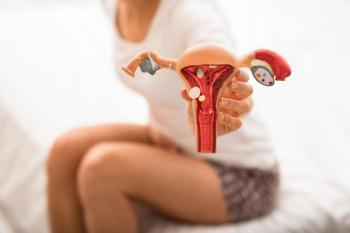
Racial differences found in pelvic floor anatomy may impact prolapse risk
A new study reveals Black women have larger, more U-shaped levator hiatus dimensions than White women, highlighting potential implications for pelvic floor disorder.
Black patients have larger levator hiatal (LH) dimensions and a more ovular, narrower, U-shaped levator hiatus than White patients, according to a study published in the American Journal of Obstetrics & Gynecology.1
Pelvic organ prolapse (POP) and urinary incontinence (UI) have been indicated as risk factors of pelvic floor dysfunction (PFD), and a 20% lifetime risk of undergoing surgery for these conditions has been reported in vagina-bearing women. Race has also been reported as a risk factor, with the highest POP and UI rates reported in White women.2
“Studies have shown that the LH area, the region enclosed by the inferior pubic rami and levator ani muscle (LAM), is predictive of POP and pertinent to POP etiology and pathogenicity. However, those study populations are not representative of parous or asymptomatic individuals of reproductive age,” wrote investigators.1
Comparing pelvic anatomy by race
The retrospective study was conducted to compare normal LAM thickness, LH morphology, and their association with risk factors for PFD between asymptomatic Black and White individuals. Participants included women aged 18 to 50 years with normal pelvic anatomy.
Pelvic MRIs from 2005 to 2023 were obtained from 2 sites for a retrospective chart review. These MRIs were obtained from patients in the supine position using 1.5-T and 3-T scanners.
Noninfected urethral diverticuli under 3 cm, uterine fibroids 3 cm or under, simple or paratubal ovarian cysts 3 cm or under, thrombosed pelvic vein, thickened endometrial stripe, hydrosalpinx, and intrauterine device were considered permissible anatomical-related abnormalities. Other abnormalities were excluded from the analysis.
3D imaging and participant demographics
A 3D pelvic coordinate system was used to register MRIs. To generate a 3D spine curve, investigators placed fiducial points along the ventral surface of the LAM. This was followed by placing a fiducial point on the inferior pubic point (IPP). The plane of minimal hiatal dimensions was calculated as the distance between the IPP and levator plate.
LH dimensional measurements were calculated by a custom algorithm. The region enclosed by the LH curve indicated the LH area, while the total length of the LH curve indicated the LH perimeter.
There were 112 patients included in the final analysis, 59 of whom were Black and 53 were White. Patients were aged a mean 34.5 years and had a median body mass index (BMI) of 28.8 kg/m2.
Similar age, gravidity, and number of cesarean deliveries were reported between racial groups. However, Black patients had an increased weight, height, BMI, and vaginal parity compared with White patients. All LAM and LH dimensions had excellent intra-rater reliability.
LH and LAM differences by race
All regions of LAM thickness were similar between Black and White patients, except for the right middle LAM, which was thicker in Black patients. In comparison, transverse diameter was the only LH dimension similar between groups. Black patients had an increased LH area, perimeter, and anteroposterior (AP) diameter compared with White patients.
The White cohort had significant associations between parity with a larger LH area, perimeter, AP diameter, and transverse diameter. However, no associations of parity with LAM or LH dimensions were reported in the Black cohort. Parity-related correlations were not significantly impacted when adjusting for age and BMI.
There were similar effects of BMI on LH dimensions between racial groups, with higher BMI linked to larger LH perimeter and a larger LH AP diameter in both Black and White patients. However, only White patients presented with a correlation between BMI and thinner right middle LAM, while Black patients had no link between BMI and LAM dimensions.
Future directions and pelvic floor considerations
These results indicated differences in normal LH dimensions and shape between Black and White women. Investigators concluded these differences may impact PFD rates in these populations.
“Future studies should analyze 3D [pelvic floor muscles (PFM)] and pelvic bone morphology among diverse cohorts with and without PFD while considering morphological confounders of the PFM and risk factors of PFD,” wrote investigators.
References
- Cason SN, Moalli PA, Lockhart ME, Richter HE, Abramowitch SD, Bowen ST. Racial differences in the levator ani muscle and levator hiatus in individuals of reproductive age. Am J Obstet Gynecol. 2025;233(1):49.e1-49.e20. doi:10.1016/j.ajog.2024.12.024
- Thom DH, van den Eeden SK, Ragins AI, et al. Differences in prevalence of urinary incontinence by race/ethnicity. J Urol. 2006;175(1):259-264. doi:10.1016/S0022-5347(05)00039-X
Newsletter
Get the latest clinical updates, case studies, and expert commentary in obstetric and gynecologic care. Sign up now to stay informed.










